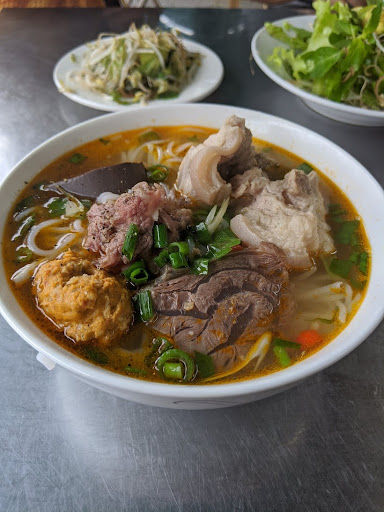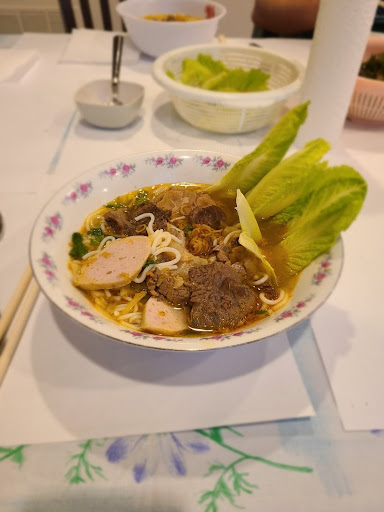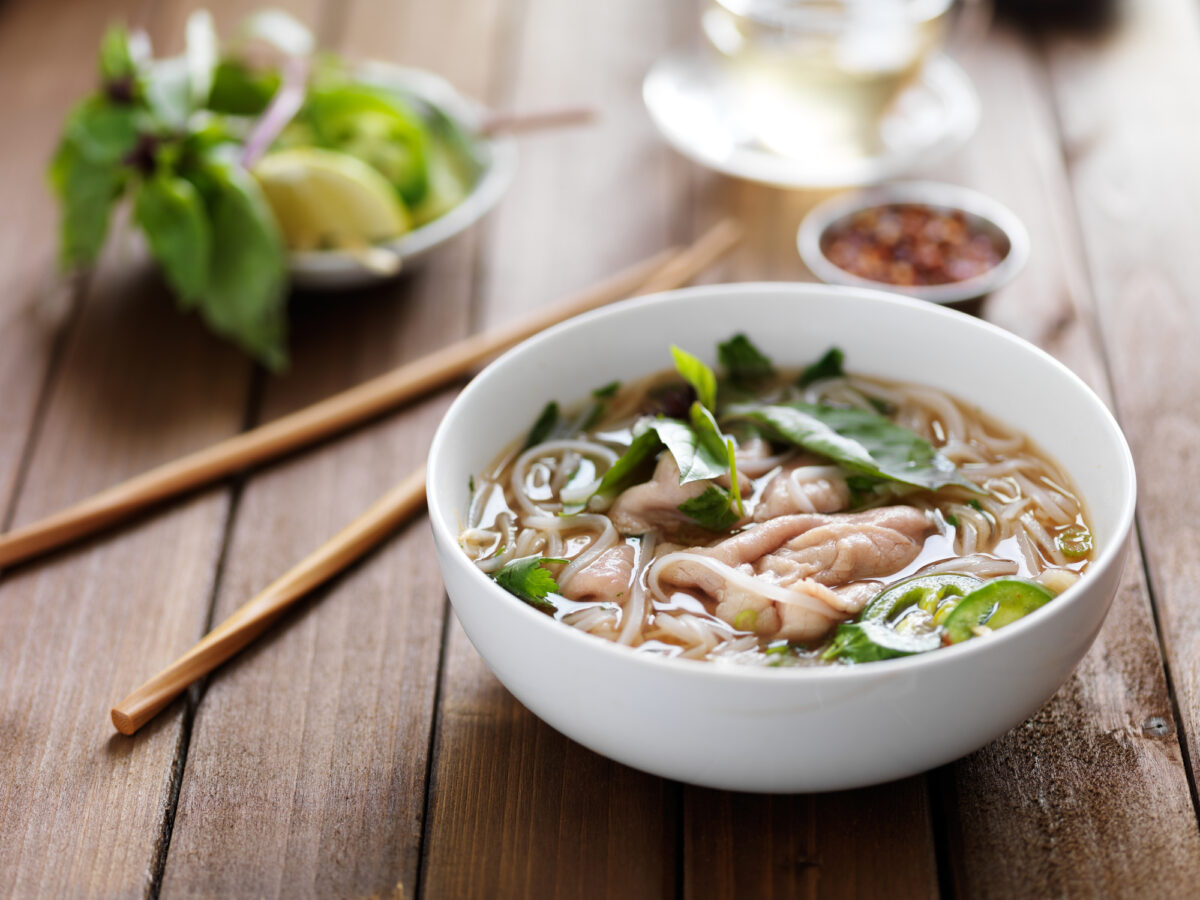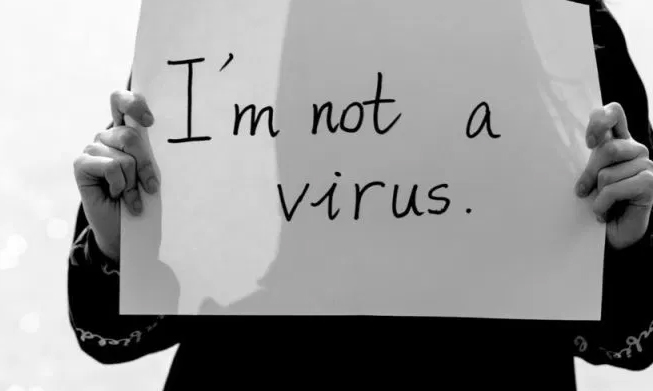By Guest Contributor: Nam Le
“It’s pronounced phở, not fuh.”
It is a joyless sentence to say, if I am ever saying it at all.
My first language is a rusty hand-me-down — the kind of thing I am shy to show in public, because it always has to be wrangled out of my pockets awkwardly. But it does work; and on this occasion, it strains and reaches for the last inflection —a balloon rising out of the throat —then sticks the landing.
The distinction does not register.
“I don’t get it. I’m saying what you’re saying. Fuh.”
“You know what? It’s fine. Let’s just go eat.”
I leave the rest of what I am thinking unsaid—because it has to be.
My first language is a rusty hand-me-down — the kind of thing I am shy to show in public.
I have already lived every variation of the above, with fuh, and its relative, the bonn me, that loaf of French Colonialism made edible. The spirit of these conversations live in every Western interaction with the Vietnamese language, which demands phonetic sounds that simply do not exist in English, and there — precisely, exactly there—is the cruel irony in ever introducing folks to our cuisine, or even ourselves.
Some part of us can’t ever be fully known by the people sampling — loving — the food, whose tongues will hold the taste, but not the syllables.
Ceding parts of myself and my language to America is not new. I had to start doing it as early as the sixth grade, when my social studies teacher insisted there was no short A sound in my own language, so I must be saying my name incorrectly. At that age, all I could do was offer a polite grin, and meekly insist that I go by what my parents intended, forming the first of many uneasy arrangements in how I present my culture in this country (which is to say, I do not) having learned too well why my heritage should only be displayed in glimpses; — my Vietnamese spoken about, but unspoken aloud, our food the furthest anyone is allowed into the homeland.
Some parts of us can’t ever be fully known by the people sampling — loving — the food, whose tongues will hold the taste, but not the syllables.
This also means that the best Vietnamese noodle dish you actually should be having remains a loosely guarded secret, if only to avoid the agony of watching people butcher a third syllable (and also because so few American places actually serve it, I suspect, for the same reasons).
So, since you are taking the trouble to read this post, here is that secret said openly: the Vietnamese noodle dish you should be having is bún bò Huế— a thick-noodled, tangy, spicy beef concoction backed up with an army of herbs. Traditional accompaniments usually include Thai basil, mint, green onion, Vietnamese sausage, chilies, jalapenos, bean sprouts, cilantro, and cabbage — cubes of pork’s blood for those more adventurous — but individual preferences ensure that no two bowls will ever be alike.
This one, was photographed on my last trip to Saigon, where three servings, two Vietnamese coffees, and an extra side of sausage cost us $9:

And here’s the same dish my mother makes from her own kitchen:

Ma often describes the making of the dish as labor: nursing the flame, skimming off the impurities, fussing with the broth for hours, the tireless scrubbing down of beef shank and pork hocks in salt and vinegar, until it is “ready”. Making it is too effort-intensive for normal occasions, so over the years, hers has taken on an additional flavor: it is her pride poured in a stockpot, the stuff that was made only for celebrations and family gatherings growing up; a bowlful of her home that was once home.
I wonder, sometimes, if this is why each experience eating it is so unique. If the secret ingredient really is love.
My shift from a lifetime of making “survival food” – the occasional steak, basically – to really cooking happened during the pandemic, when I would be done streaming distance learning lessons at 2PM, and my fiancee was still juggling work and grad school. With that much downtime, feeding the two of us started as the responsible thing to do. It became so much more, so quickly: there were all new pots in the kitchen two months in; by four, a paella pan I’ve still only used twice, a custom Etsy tabletholder to keep recipes on, elaborate weekend experiments of Short Rib Polenta with Red Wine and Mushroom Sauce; Wagyu Surf and Turf burgers because I had been by the Farmer’s Market.
It definitely wasn’t a restaurant or anything, but I discovered such joy in pretending I ran three of them out of our apartment: a diner-deli, a fine dining establishment, a dive bar. People coming over for a game got the third menu — arancini, duck confit tacos, and the like; friends for dinner meant sending preference forms long in advance, so I could tailor every aspect of the meal to their exact liking.
A fourth has been stuck in the dreaming stages: a Vietnamese joint, where I could show people visiting something more than just fuh. The only problem – my pursuit of the perfect Bún bò Huế led me to the same fate that many children of immigrants have: nostalgic and wanting to replicate a family recipe at home, to no avail.
Part of this, I quickly discovered, was a logistical issue. Versions online – including one to be made in an Instant Pot, something I sensed would be beyond the pale to even attempt – and none of the instructions for ours are written down anywhere, because so many of these dishes are taught by repetition from a young age; a rather large hurdle, given how late I began my culinary education. I’ve tried to steal scrawls of notes from rapid, frantic typing during calls with Ma, and even asked her to tape record the process, but none of it ever makes sense after. After my last attempt, I ended up with: “if tendon, use pressure cooker, salt water to wash out smells.”
No times. Or measurements. The instinct is supposed to be in my genes, I guess.
This, though, is only the lid on something deeper simmering – the subconscious fear in so many of the Asian American 1.5 generation; we are trailblazers, both culinary and cultural, belonging neither to the land we can trace our roots to, nor any more home here, in an America that is frequently indifferent to us when it isn’t outright hateful. Trying to recreate these dishes is, on some level, reckoning with all we’ve had to hide in the name of survival. Effort-intensive. Literally, laboring.
I lift the lid.
My final exam for Diaspora 301 is the week my folks visit for dinner in LA — and complicating things further, is the fact that my future father in law happens to be visiting the same weekend. The test: serving the three of them Vietnamese food — both because I finally feel ready to soft open that shop, and also because my folks’ palettes are heavily biased toward East Asia, meaning my normal “impress guest” dishes are off the table. No pan seared elk medallions in balsamic-honey fig sauce.
For a while, I hope to make them bún bò Huế, but I know that I am not yet ready to do so. At least, not right now. There are too many ingredients to gather from markets too inconvenient to drive to, with not enough time to do it all in on the day they arrive; I understand, in that moment, what it meant for Ma to serve it all those years, and on all the times I came home.
The night’s menu is for bò kho, instead — a Vietnamese beef stew that is easier to execute and simpler to make, but still not error-free despite the lower degree of difficulty.
The lemongrass doesn’t cut the first time, or the second.
In fact, my knife refuses to sink through the stalks cleanly, and I manage to miss the soft part at the core; two things I would have learned by now, if I hadn’t spent so many years trying actively not to. Eventually, and not without frustration, I machete my way through. Whatever I can salvage goes into an already bubbling pot of marinated beef, fish sauce, star anise, onion, potatoes, and carrots — timed carefully to come off the stove whenever my parents tell me they’ve arrived at the apartment.
My future father-in-law says, predictably, that it is delicious, and he helps himself to fourths, after already snacking on the array of goods my parents brought with them: fried banana and egg rolls.
Ma says, predictably, that the stew is fine. In her tongue — switching so as not to be understood — she says that it is bland, a bit, even.
Ba says, predictably, nothing.
Neither of them offend me, because I have already known I entered into a losing proposition by trying. It cannot be satisfactory Vietnamese food, because it isn’t their Vietnamese food, wrapped in the scent of what they lived, and lacking the salt of what they left; how could it be, when I have grown up a shore away from where these meals are normally made?
It cannot be satisfactory Vietnamese food, because it isn’t their Vietnamese food, wrapped in the scent of what they lived, and lacking the salt of what they left; how could it be, when I have grown up a shore away from where these meals are normally made?
After the dishes are set aside, and despite them not being dessert people — Ba is a diabetic, and Ma watches his diet like a mothering hawk — my parents do split some of what I’ve prepared for after the meal: a black cocoa panna cotta, while my future father-in-law selects a cream one, which he spoons some homemade raspberry compote over. I only get Ma’s buy-in when I explain it to her as something like flan, which they are familiar with.
No matter how used I have become to feeling discomfort during Vietnamese meals, I cannot, in any universe, find myself prepared for the moment her spoon touches her lip, as she tells me it’s good – a word that feels like wrangled out of her pockets awkwardly, in a language that was bought second hand.
Her English swoops, and tumbles; the decades in Vietnam still evident in her voice. But she sticks the landing.
The distinction registers.
Nam is really, really bad at writing author bios. He spends his time writing about anything that fascinates him, whenever he’s not learning how to do magic, or suffering at the hands of Tottenham Hotspur. You can reach him on any social media platform at @aguynamednam.
Learn more about Reappropriate’s guest writing program and submit your work here.


